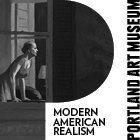
|
||
|
Portland art blog + news + exhibition reviews + galleries + contemporary northwest art
|
||
Monday Links Guernica
suffered a lot of wear and tear during it's travels... but this time the
condition report has a political angle. IMHO, Guernica and Jimi Hendrix's Star
Spangled Banner are the two most successful pieces of political art ever.
Powerslice enjoys some cool things. Edward Winkleman is clamping down on his comments... in the past his site has had some of the most lively debates about art in his comment section, but lately its gone south. It's true, moderating comments is a drain on time but there is an interesting dynamic to having reader feedback; it often reveals more facets to the story. About this time last year I was seriously considering removing comments altogether from PORT but after a period of clamping down I think people have gotten the gist... strong opinions are fine but no personal attacks. Last but not least mayor elect and current transpo comish Sam Adam's liked my post on a better bridge design. A lot of other people did too. My post was simple common sense from an aesthetictician, with the added power of some decent pictures. Even the Oregonian's editorial board has started to play catch up (Calatrava is good but we need something more radical like Hadid, UN Studio etc., Calatrava has already peaked and less likely to reinvent the bridge for the 21st century... he already reinvented it for the late 20th.). Actually what the O really needs is an architecture critic. Hire Brian Libby, simply using him freelance isn't enough, it's the difference between a personal body guard and a rent a cop... for the O to do it's job during this major design upheaval in Portland it needs someone who would take a bullet. Randy Gragg did heroic things like insist on a design competition for the Tram. BTW that's exactly what we need for the I-5 bridge, scrape together a couple of hundred grand and invite Hadid, UN Studio, Foster, Cloepfil, Toyo Ito and Monolab etc. The ideas and buzz it will generate will be more than worth it, giving the finalist and all of us a much better bridge. If an architect from outside the area is chosen no big deal, most big jobs have a local firm partnered as well. Posted by Jeff Jahn on July 21, 2008 at 10:59 | Comments (12) Comments How political was Hendrix's SSB, really? It was certainly taken to be very much so at the time, but that was inevitable, given the climate. It has been suggested that his intentions were politically ambiguous; I don't know, but the effect was not. So is art what it is meant to be or what it is taken to be? Obviously it's both, but the question is worth some thought, especially for someone making the stuff... (Have you heard the studio version on Hear My Music, tacked onto the end of Ezy Ryder? It's better than Woodstock's!). Posted by: rosenak My comment (above) comes in part out of seeing way too much art with a relationship to the intentions expressed in the artist's statement that could only be taken on faith. Sometimes artists need to be reminded that putting something in a piece doesn't mean it's there. Posted by: rosenak Rosenak brings up an interesting point with regards to what "intended" vs. what's there. It reminds me of a Picasso quote:
Part of the problem with Artists statements. They're attempts at filling in the gaps of the work. The artist statement is a strickly academic construction. It's insulting to the viewer. Put all you have into the artwork and you will not need a statement. If your art needs an instruction manual to understand, you better glue your statement to the back of every piece you do and emphasize that you may be more a writer than an artist. It would be like if a writer presented a manuscript to a publisher. The publisher say's "Thanks for your novel. But before I can read it I want you to draw me a picture that illustrates what being a writer means to you". Same thing in my book. Thank you for allowing me to comment. Posted by: Sean Casey Most artist statements stink, but not all of them.. Sometimes they are entries into a different worldview but Ive always felt they operate somewhat like a footnote to the actual work. Most of the time they are just a bunch of unfullfilled wishes. That said on a conceptual level it's those wishes that have to be isolated and articulated before it can actually be fullfilled. I think Hendrix was making a nuanced/bombastic political statement... so ascertaining intent plays a key part in determining if it was successful or not. Artist statements can reiterate intent. Usually it's horribly abused. my least favorite artist statement lines begin with: "In my work I try to..." "My art is about..." :n those openers the intent is presented too rigidly and often doesnt bode well. Posted by: Double J But suppose for the sake of discussion that Hendrix, to the extent that the performance "meant" something more than its own magnificence, thought of it as being an apolitical description rather than the commentary it is taken to be -- would you consider it a failure? If not, suppose that you were to learn that he did -- would you say he was right? One of my pet peeves is the excessive treatment of art as artifact -- as this applies to my example I would say that to judge Hendrix's SSB by his criterea would be making the mistake of treating it as the mere artifact of his intentions, absurdly substituting judgment for experience, and if one is going to do that, why bother with either? As for artist's statements, I'd rather stay home and watch Love Boat than see someone's "investigation" into or "exploration" of (fill in perfectly acceptable idea). Show me a realization of something, anything! Captain Steubing and crew at least did that much! Posted by: rosenak Some art that's hundreds of years old starts out trying to be art... Other stuff just ends up being treated as art... neither the artist nor audience (in a contemporary sense or much later) have ultimate control over the perception of the work. Yes Jimi was awesome, one of the highpoints of the 20th century and something tells me he will inspire... and inspire different readings of his music even 500 years from now. I dont have the same feeling about Matthew Barney, or Bjork... though I really like bjork (Im a sucker for odd elf music). Captain Steubing... OMFG! not quite Hendrix but certainly better than most artist statements! Love boat marathon or artist statement reading marathon... it's no contest. I love art but a man's gotta have his limits! Ill take pop cheese over some pretentious hell any day! Looking at the art usually tells me if reading an artist's statement is safe. Posted by: Double J "neither the artist nor audience (in a contemporary sense or much later) have ultimate control over the perception of the work." True. My point is that for the viewer -- that is, everybody -- it is her/his "perception" (I would say "experience") that matters. The artist's intentions, the work's historical context, and other data or opinion, are useful to the art lover only insofar as they enrich that experience (scholarship of course is valid on it's own terms, but that's something else altogether) -- they should not be treated as the object of that experience. This is obvious enough, but sometimes I fear that we are being (mostly inadvertently) encouraged to forget that. It's the Jimi Hendrix Experience, after all, not the Jimi Hendrix Artifact! I can enjoy a good tightly-programmed museum show as much as the next person, but there can be a big price to pay for that kind of thing (in addition to the ticket fee). I'd like to show up at PAM someday and find everything displayed randomly without any commentary or even identification; otherwise the works are always going to be to some extent mere examples or reference-providers, robbed of the full strength of their voices, and wouldn't that be a shame for those of us who LOVE ART TO FUCKING PIECES and those of us who might? And if we aren't either of those peoples, what would we be doing there in the first place? Posted by: rosenak The artist's intentions, the work's historical context, and other data or opinion, are useful to the art lover only insofar as they enrich that experience... Precisely. I find that my experience of art is almost always enriched by a little history, or even just some information on "how in the world did they make that thing work?". But the ideal viewing environment for me is when I have the time to take something in, then think about the context provided, and take it in again. On the other hand, statements that dictate meaning or try to control my perception and experience of the work are boring and detrimental. As I think everyone seems to agree, what makes art interesting ultimately exists in the experience of the beholder, and cramming explanations down someone's throat simply suggests that there's no substance in the piece itself. Peripheral Vision posted an interesting and relevant rumination on artist labels yesterday. Posted by: Megan Megan, you are an experienced (can I please get through a sentence without using that word already?) art viewer and you know how to take in the supplementary context and make it work for you (I use the word "context" here rather than "material" in order to include the placement of the work). I worry about the insecure novice who has been fed the idea that "understanding" the work is a necessary chore -- the work itself then becomes supplementary material, and its essence is marginalized. Yet this is the person who might benefit most from having context provided. How do we solve this puzzle? I propose that we combine our two ideas and suggest to PAM that they have the random contextless installation I mentioned in the morning, send viewers to the cafe for (free) lunch for an hour while they do a quick reinstall, and have the traditional layout along with labels, wall signs, audio tours, in-gallery seminars, etc. (the works!) in the afternoon. Fine tuning, anyone? At the same time, I sadly also see a lot of experienced viewers who have been twisted by these problems, and saddest of all I often see it in the art being produced these days -- artwork that is no more (and often less) than an illustration of a proposition (see above whining about artist statements). Posted by: rosenak From Roberta Smith in her review of the How Soon Is Now group show of work by "emerging" artists at the Bronx Museum of The Arts (7/25/08 New York Times): "Perhaps an overfamiliarity with Conceptual Art and especially the theories it inspired can leave young artists with no sense of how to make an artwork that holds together as an experience. You can sense the lack of connection to either materials or self in their statements, which appear on the wall labels beside the work. They mix overblown, one-size-fits-all artspeak with quite a bit of wishful thinking about their work's impact, as if they could control the meaning or effect of their work." Posted by: rosenak Roberta is right about that dynamic. The great strength and weakness of highly conceptual art is it is like a recipe that can be followed.... but it's the same with craft. The real trick is to do something that can be read in a way contrary to its most obvious interpretation or experience. Doing so without relying on Robert Rauschenberg, Kandinsky, Duchamp, Picasso, Matisse, smithson, Judd or Gordon Matta Clark in some way is way more difficult. Some artists today dont want to balze new trails, they want to find a career in the art world. Robert Hughes' original (and best) version of "the Shock of the New" made this same observation... noteing something like; art has become too much of a vocation, not an avocation. Still Hughes missed the boat on Basquiat... (though he was right about Schnabel)... so it is important not to think like Jed Perl who constantly portrays the art world as in some kind of peril... maybe it is but no critic can save the art world from itself. We just hang around and wait to find the exceptions to the rule; those artists that justify the whole mess that is the art world. The Show The Violet Hour at the Henry is pretty much unsucessful drivel trying too hard to be relevant... and it comes off as quasi-occult careerism as artspeak. Posted by: Double J From the same Roberta Smith article (NYT, 7/25/08): "It does gives me pause that 26 of the 36 artists have master's degrees in fine arts from respected universities or art schools. I think most of them should ask for their money back. On the evidence here, at least, they have only a meager understanding of what being an artist entails. 'How Soon Is Now?' suggests that there is no point in spending time on 'professional development' or learning how to advance one's work in the marketplace if artistic development is not well under way. That requires lots of long, hard looking at all kinds of art, in all mediums, from all periods and cultures. Aspiring artists need to expose themselves to the sheer intensity and variety of art, to learn what they love, what they hate and if they are actually artists at all. New York's galleries and especially its great museums offer ample opportunity for this kind of self-education, which leads to self-knowledge. Anything is possible when artists set to work knowing they have something they urgently need to say, in a way it hasn't quite been said before." In response to an earlier comment of yours, Jeff: I agree that some artist statements are good, and I agree that most stink. I only wish the stench of some were easier to ignore, but often, as Sean Casey rightly complains (above), they function as a crucial part of the work. I repeat myself here because my attempts to make this point have been awkward: when the work is incomprehensible without the statement, the work rather than the statement is what you (Jeff) called the "footnote." Posted by: rosenak Post a comment Thanks for signing in, . Now you can comment. (sign out)
(If you haven't left a comment here before, you may need to be approved by
the site owner before your comment will appear. Until then, it won't appear
on the entry. Thanks for waiting.)
|
| s p o n s o r s |
 |
 |
 |
 |
 |
 |
 |
 |
 |
 |
 |
 |
 |
 |
 |
 |

|
Site Design: Jennifer Armbrust | • | Site Development: Philippe Blanc & Katherine Bovee | |


![[TypeKey Profile Page]](http://www.portlandart.net/nav-commenters.gif)